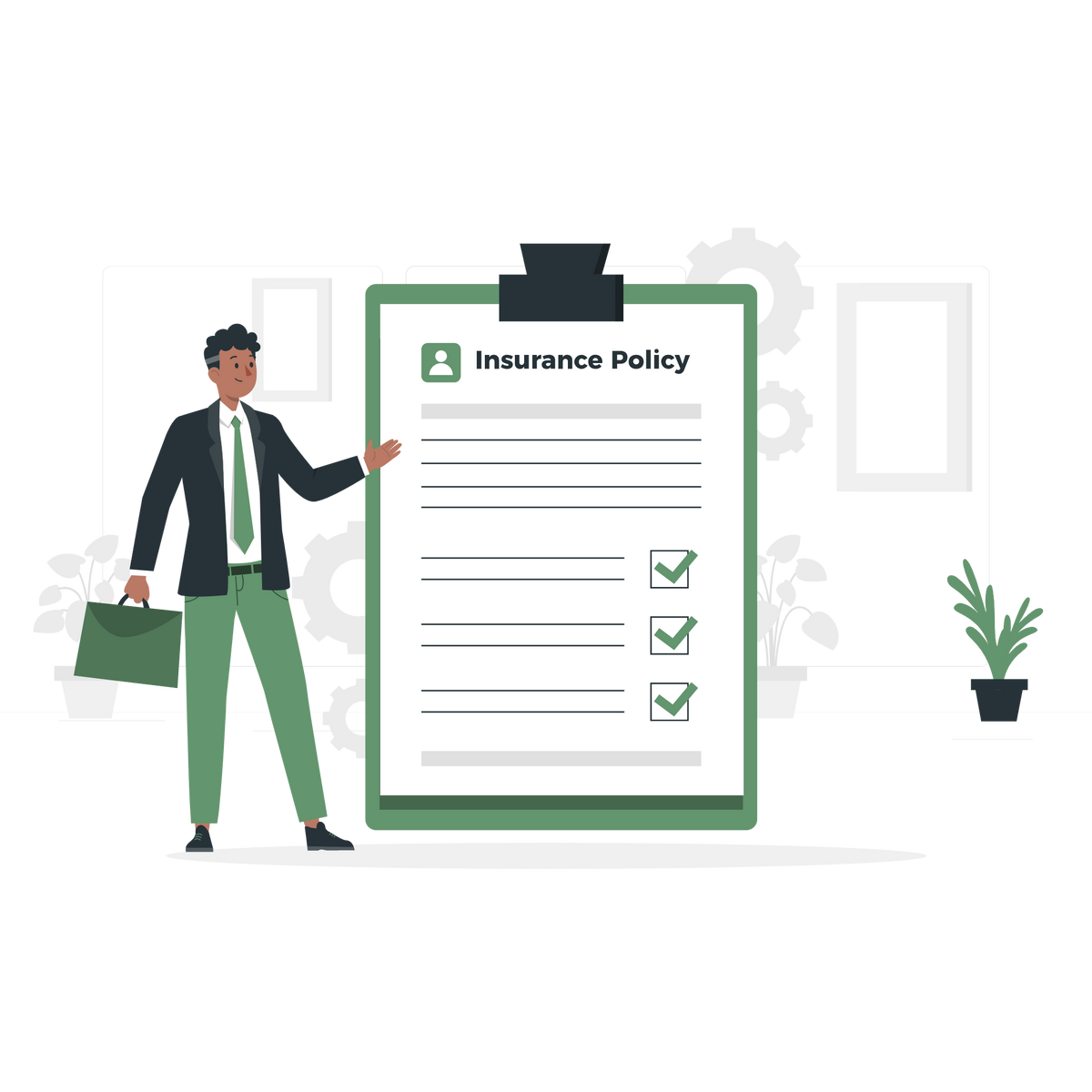How to Get Insurance to Pay for Roof Replacement
Help! I Need a new roof, but how do I get insurance to pay for roof replacement? Let's walk you through the process.

When a severe storm damages your roof, your first concern is likely to be how to get it fixed as quickly and affordably as possible. Fortunately, if you have homeowners insurance, you may be able to get your roof replacement covered by your policy.
To do so, you will need to understand your policy's coverage and exclusions, assess the damage to your roof, file a claim, and find a reputable roofing contractor. In this article, we'll walk you through each step of the process.
Understanding Your Homeowners Insurance Policy
As a homeowner, one of the most important documents you have is your homeowners insurance policy. It provides you with financial protection in the event of damage to your home and its contents. However, before you can determine whether your insurance policy will cover your roof replacement, you'll need to review your policy and understand what it covers and what it does not.
Most standard homeowners insurance policies cover damage caused by "perils," or specific events, such as wind, hail, and fire. However, policies typically exclude damage caused by wear and tear or neglect. It's important to note that if your roof was damaged due to a lack of maintenance or neglect, your insurance company may not cover the cost of repairs or replacement.
Types of Roof Coverage
Your policy will likely provide one of two types of coverage for your roof: actual cash value (ACV) or replacement cost value (RCV).
- ACV coverage provides you with the current value of your roof, taking into account depreciation. This means that if your roof is old or has been damaged before, your insurance payout may not cover the full cost of repairs or replacement.
- RCV coverage, on the other hand, pays for the full cost of repairing or replacing your damaged roof, without taking depreciation into account. This type of coverage is generally more expensive, but it provides greater financial protection in the event of a major roof repair or replacement.
Exclusions and Limitations
It's essential to review your policy for any exclusions or limitations that may affect coverage for roof replacement. For example, some policies may exclude coverage for damage caused by certain types of storms, such as hurricanes or tornadoes. Additionally, some policies may limit coverage based on the age or condition of your roof.
It's important to note that even if your policy covers roof replacement, there may be limits to the amount of coverage provided. Make sure to review your policy carefully and speak with your insurance agent if you have any questions or concerns.
Deductibles and Payouts
Your policy will also have a deductible, which is the amount you'll have to pay out of pocket before your insurance coverage kicks in. The amount of your deductible will affect the amount of your insurance payout.
For example, if your deductible is $1,000 and your roof replacement costs $10,000, you'll be responsible for paying the first $1,000, and your insurance company will cover the remaining $9,000.
It's important to choose a deductible that you can afford to pay out of pocket. A higher deductible will generally result in a lower insurance premium, but it also means that you'll be responsible for paying more out of pocket if you need to make a claim.
In conclusion, understanding your homeowner's insurance policy is crucial when it comes to protecting your home and its contents. By reviewing your policy and understanding the types of coverage, exclusions, and deductibles, you can ensure that you have the right level of protection in the event of a roof replacement or other damage to your home.
Assessing Roof Damage
Before you file an insurance claim, you'll need to assess the damage to your roof carefully. Your roof is one of the most important parts of your home, protecting you and your family from the elements.
When it comes to assessing roof damage, it's important to take your time and be thorough.
One of the most common causes of roof damage is severe weather. High winds, hail, and heavy rain can all take a toll on your roof, causing shingles to become loose or even ripped off entirely.
Fallen trees are another common cause of roof damage, particularly during severe storms or hurricanes. Ice dams can also cause significant damage to your roof, as they can prevent snow and ice from melting and draining properly.
Common Causes of Roof Damage
Damage to your roof can occur for several reasons, including wind, hail, fallen trees, and ice dams. It's important to determine the cause of the damage, as this will affect your insurance claim. If you're not sure what caused the damage, a professional roofing inspector can help you identify the root cause.
Signs of Roof Damage
Some visible signs of roof damage might include cracked or missing shingles, leaks, water stains, or visible damage to the roof structure. However, not all damage is immediately visible.
Have a professional roofing inspector assess the damage, as they can identify hidden damage that may not be immediately apparent.
It's also important to note that not all damage requires a full roof replacement. Minor damage, such as a few missing shingles, can often be repaired without the need for a full replacement. However, more severe damage may require a full replacement in order to ensure the safety and integrity of your home.
Hiring a Professional Roof Inspector
A professional roofing inspector can assess the damage to your roof and provide a detailed report for your insurance company.
It's crucial to hire a reputable inspector who is licensed, insured, and experienced in identifying storm damage. When hiring an inspector, be sure to ask for references and check their credentials to ensure that you're getting a qualified professional.
Overall, assessing roof damage is an important part of protecting your home and ensuring that you're able to file an accurate insurance claim. By taking the time to assess the damage carefully and hiring a professional inspector, you can ensure that your roof is repaired or replaced properly, keeping you and your family safe and secure for years to come.

Filing an Insurance Claim for Roof Replacement
Roof damage can be a significant expense for homeowners. Fortunately, most insurance policies cover damage caused by storms, hail, and other natural disasters. If you're facing a roof replacement, filing an insurance claim can help offset the cost. Here's what you need to know.
Documenting the Damage
Before you file a claim, it's essential to document the damage to your roof thoroughly. This documentation will serve as evidence for your insurance company and ensure that you receive the maximum coverage possible.
Take photos and videos of the damage from multiple angles, and make sure to capture any visible signs of wear and tear. Additionally, keep all receipts and invoices for any temporary repairs you've made, as these may also be covered under your policy.
Contacting Your Insurance Company
Once you've documented the damage, it's time to contact your insurance company to file a claim. You can usually find the contact information on your policy or the company's website.
Be prepared to provide your policy number, a description of the damage, and any documentation you have gathered. It's also a good idea to have a rough estimate of the repair costs, as your insurance company will likely ask for this information.
Preparing Necessary Documentation
Your insurance company may require additional documentation, depending on the extent of the damage.
For example, they may ask for a detailed estimate of the repair costs or a report from a professional roofing inspector.
Be sure to keep track of all deadlines and requirements to ensure that your claim is processed quickly and accurately.
It's also important to note that some insurance policies have a time limit for filing a claim, so be sure to act quickly. Waiting too long could result in a denial of coverage.
Working with an Insurance Adjuster
After you file your claim, your insurance company will assign an adjuster to your case. The adjuster will review your claim and determine the amount of coverage you're eligible for. It's essential to work closely with the adjuster and provide all necessary information to ensure that your claim is processed smoothly.
During the inspection, the adjuster will assess the damage to your roof and determine the cost of repairs or replacement. They may also ask for additional documentation or clarification on certain aspects of your claim. Be sure to answer all questions truthfully and provide any additional information requested by the adjuster.
Once the adjuster has completed their review, they will provide a report outlining the coverage amount and any limitations or exclusions. If you agree with the report, you can accept the settlement and begin the process of repairing or replacing your roof.
If you disagree with the adjuster's report, you can appeal the decision or request a second inspection. Keep in mind that this process can be lengthy and may require additional documentation or evidence.
In conclusion, filing an insurance claim for roof replacement can be a complex process. By documenting the damage thoroughly, contacting your insurance company promptly, and working closely with the adjuster, you can ensure that your claim is processed quickly and accurately.

Selecting a Roofing Contractor
When it comes to selecting a roofing contractor, there are several important factors to consider. Your roof is one of the most important components of your home, and any repairs or replacement should be handled by a reputable professional.
Finally, once your insurance claim has been approved, you'll need to find a reputable roofing contractor to complete the repairs or replacement of your roof. This can be a daunting task, but with the right information, you can make an informed decision.
Finding a Reputable Contractor
One of the most important steps in selecting a roofing contractor is finding a reputable professional. It's important to research roofing contractors and find one who is licensed, insured, and experienced in storm damage repair.
Ask for referrals from friends and family members who have had roofing work done in the past. You can also check online reviews and ratings to get an idea of the quality of work that a contractor provides.
When you're researching contractors, be sure to check their credentials. Look for licensing and insurance information, and make sure that they have experience working with your type of roof.
Comparing Estimates and Insurance Payouts
Once you've found a few potential roofing contractors, it's important to compare estimates for the cost of the repairs or replacement. Make sure that each estimate includes all necessary materials and labor costs.
It's also important to compare the estimated cost to the amount of your insurance payout. This will help ensure that you're getting a fair deal and that the contractor is not overcharging you for the work.
Ensuring Proper Licensing and Insurance
Before hiring a roofing contractor, it's important to ensure that they have the proper licensing and insurance. This will protect you in case of accidents or damage during repairs.
Check with your state's licensing board to ensure that the contractor is licensed and in good standing. You can also ask to see proof of insurance, including liability and workers' compensation coverage.
With these steps in mind, you can get your insurance to pay for your roof replacement and ensure that your home is safe and protected. Stay informed, communicate clearly with your insurance company, and work with reputable professionals to ensure that your home is in good hands.
Remember, your roof is an important investment in your home's safety and security. By taking the time to find a reputable roofing contractor, you can ensure that your roof is repaired or replaced properly, and that your home is protected for years to come.




Comments ()